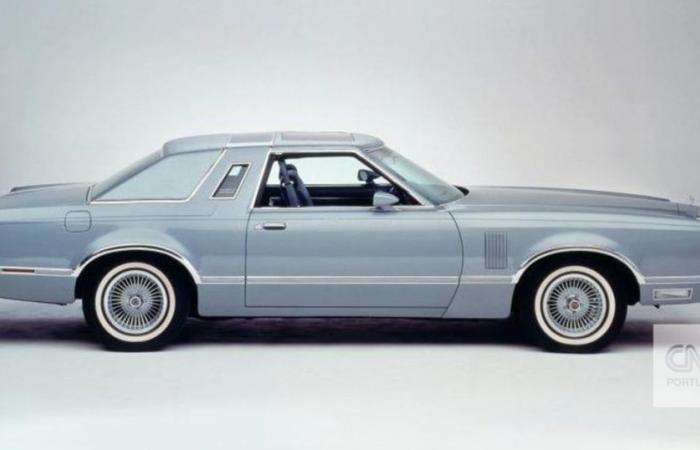Join this journey, where style and practicality clash with each other
In the 1990s, a type of American car that had existed for decades became practically extinct. Big, inefficient, impractical, but surprisingly eye-catching and beautiful. They evoked a time of American exaggeration.
This type of car included the Chrysler Cordoba with its “Corinthian leather” seats – roll up the R’s like Ricardo Montalbán did in the ads – the Buick Riviera, the Cadillac Eldorado and the Oldsmobile Toronado. (Spanish-sounding names were big too). Driving one of these “personal luxury cars” was a statement about his superior taste and also about his carefree lifestyle, which did not require the mundane practicality of rear doors.
Today there are still two-door cars, of course. But almost all are high-performance sports cars that weren’t designed for comfortable travel. In turn, the “coupés [descapotáveis] luxury cars” from the forties and fifties can fetch higher prices among car collectors than four-door vehicles from the same period – which proves how they continue to fascinate.
“I think the expression started in the 1960s,” said Brian Rabold, of Hagerty, a company dedicated to collector cars, about “personal luxury coupes”. “But the heyday was in the 70s. There were still some proposals, but they started to decline in the 80s and 90s.”
1963 Buick Riviera (Bob D’Olivo/The Enthusiast Network/Getty Images)
The first touch screen
Long, low and elegant, they were seen as design and technology pieces for their respective brands. In 1986, the Riviera delivered the first touchscreen in a production car, according to GM. Car companies could do this because these cars were sold in fewer numbers, even at that time, than four-door models.
“As production volumes were smaller, it was possible to invest in superior technology,” said Kevin Kirbitz, a former GM engineer, who now heads the company’s classic collection. “The price was already higher in itself”
Over the years, these cars have left their mark. Even today, American two-door models generate a certain fascination at automotive fairs. With their long hood, large chrome and two huge doors that allow strange access to the back seat – which is even a reasonable size, if you can get there –, they continue to be seen as a form of statement.
For car designers, the two models have more striking proportions that can be played with, long bonnets that evoke power, as well as a tapered and aerodynamic rear part.
“You get a steeper windshield,” explained Kirbitz. “They can achieve a longer ratio.”
Many models were available with two or four doors. Today, two-door models are worth around 67% more to car collectors, confirming the style’s appeal. Of course, someone buying a 50-year-old car is certainly less concerned about practicalities than buyers in the past, Rabold pointed out.
Login to Thunderbird
Two-door cars have existed practically as long as cars themselves have had doors. However, Rabold coincides the great growth of its positioning in “personal luxury” with the Ford Thunderbird. It was introduced in 1955 as a sort of competitor to the Chevrolet Corvette. The Thunderbird immediately headed in a different direction. While the Corvette evolved into a conservative sports car, Ford designers added rear seats and transformed the Thunderbird into a comfortable vehicle to travel in. The style quickly won over.
1980 Chrysler Cordoba (Stellantis)
“It dictated a pattern, with many cars appearing later”, said Rabold. “Each car manufacturer had, at the time, to find a model to compete in that segment”.
Four-door models continued to be more common. However, a two-door car said a lot about its owner, said Scott Krugger, vice president for design at Dodge, part of the Stellantis group.
“Over time, two-door cars became a way for someone to assert themselves, to assert their performance, to assert how special they were. In turn, the four-door models demonstrate a practical side, a response to the family’s needs. That’s how they diverged,” he stated.Bottom of the form
The series of spacious two-door models lasted several decades. But in the 1990s, something changed. Today it is rare to find one of these vehicles that is not a high-performance model, such as the Mustang or the Corvette. Even the most economical cars on the market, like the Nissan Versa or the Kia Rio, come with four doors. Rear doors, even on vans, are now standard.
Why were they extinct?
There have been several factors conspiring to bring two-door cars to their current status as niche vehicles. First, the rise of the SUV [utilitários desportivos] pushed various types of vehicles to the margins, no matter how many doors they have. True cars now represent less than 20% of all new vehicles, according to data from Cox Automotive.
Furthermore, safety rules for transporting children undoubtedly played an important role, said Kirbitz. In the 1980s, child safety seats were required throughout the United States of America. That’s how the days of having to fold down the front seats to seat children in the back, with or without seat belts, ended.
Today, if you have a two-door car and children, you also risk damaging your back. You have to lean in a strange way to get your children into the back seat. And, before that, to install the car seat itself.
Although two-door cars used to be seen as bargains, today they can mainly be found at European car stands dedicated to the luxury sector.
BMW and Audi have two-door, convertible, hardtop models available. Mercedes-Benz has just presented the new CLE Coupe. The brand keeps a non-sports car in its American dealerships because, ignoring the practicalities, there is still a market for it. There are still customers who value style over practical aspects, said Gorden Wagener, head of design at Mercedes-Benz.
“A car is a representation of ourselves and our taste,” he said. “And there’s nothing more effective to show it than a coupé, right?”






